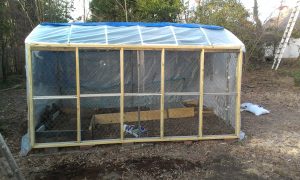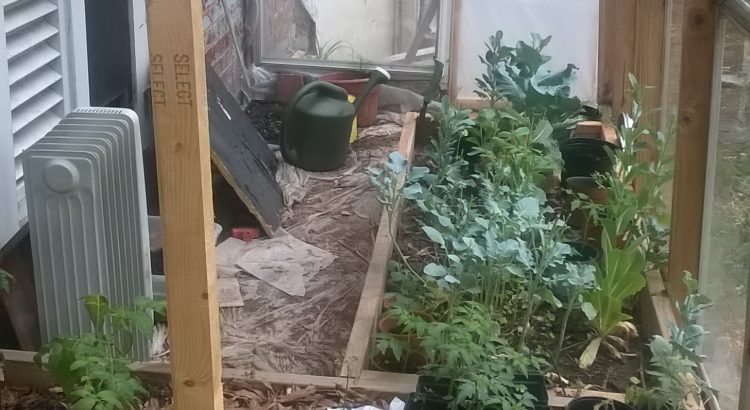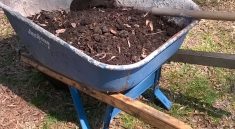Permanent greenhouse plans being developed and include heat from sun and compost, Composter design will help insulate from N wind produce heat and create compost
I have built and used 2 greenhouses in the past several years.
They were both experimental and never intended to be permanent.
Both employed glass to a large extent, glass that was formerly storm windows.
I hope to build a more permanent greenhouse this year in time for winter.
One of the logistical and cost aspects of using a greenhouse is how to adequately provide heat.
I have known for many years that compost can provide quite hot temperatures.
I have already begun thinking about the design of a composting “bin” that will be located on the northern side of the greenhouse and thus helping to insulate from north winds. Warm air from the compost will rise and be channeled into the greenhouse and consequently colder air will be sucked out of the greenhouse and into the bin for warming. Of course as part of this process compost will be created.
My initial design appears solid and looks promising.
Here is some information on how to achieve desired temperatures with compost.
From Permaculture.
“How to Make Hot Compost
Hot compost is a quick and easy way to get through your waste.
A hot compost pile can reach temperatures of 49-77 degrees Celsius (120-170 degrees Fahrenheit) in just a few days, and if you get it right, you can compost your organic matter in around four weeks. You can even use these high temperatures to heat your water, home or greenhouse. The temperature of the pile must be monitored because remaining at a temperature of 65 degrees Celsius or higher for even just a few hours, will kill beneficial microorganisms that add to your compost.
What you will need
Equal parts green and brown materials, all shredded to a small size. Fresh grass clippings and dried shredded leaves work great for your first effort because they’re already in small pieces, and the grass clippings are full of moisture.
A fork or shovel for turning
A compost thermometer or a meat thermometer attached to the end of a stick
A tarp (optional)
A bin/container (optional)
Method
Make sure all organic matter is chopped into small pieces and mix together the green and brown materials well. Add in around a shovelful of already made compost or soil, which will be full of microorganisms to jumpstart the process.
As you build the pile, sprinkle with some water to keep the organic matter moist. It needs to be the consistency of a wrung-out sponge.
Your compost pile needs to be around one cubic meter in size. Any larger than one and a half cubic metres, will mean moisture and heat levels are wrong for speedy decomposition. At this stage you could cover the pile with a breathable tarp to maintain moisture, but this isn’t necessary.
Over the next month you will need to monitor and record the daily temperarture of the pile with a compost thermometer. Between one and five days, the temperature should rise, between 49 and 77 degrees Celsius (120 to 170 degrees Fahrenheit). The temperature will depend on moisture levels, the size of your organic matter and the size of your pile.
Once the temperature cools to below 43 degrees Celsius (110 degrees Fahrenheit), which is usually between four and seven days, you will need to turn over the organic matter to introduce oxygen. This will then heat the pile back up.”
Read more:
https://www.permaculture.co.uk/readers-solutions/how-make-hot-compost
My first Greenhouse.





